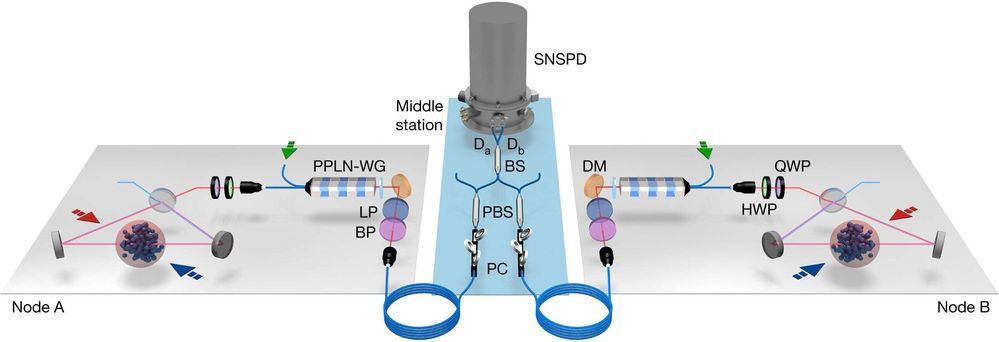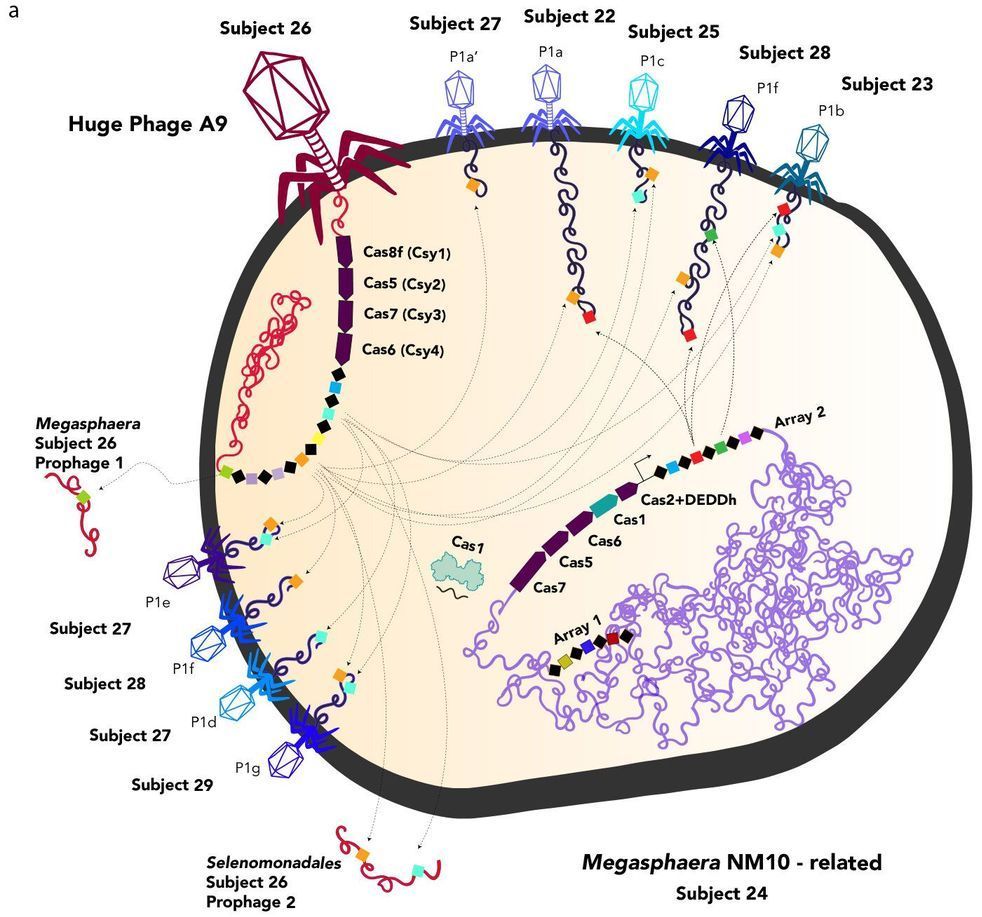But think of all the money you’ll save on movie tickets.
The ballpark figure is $5 million.


A team of researchers affiliated with several institutions in China has succeeded in sending entangled quantum memories over a 50-kilometer coiled fiber cable. In their paper published in the journal Nature, the group describes several experiments they conducted involving entangling quantum memory over long distances, the challenges they overcame, and problems still to be addressed.
Over the past several years, scientists have been working toward the development of a quantum internet—one very much the same as the present-day network, but with much stronger security. One such approach is based on the development of quantum keys that would allow parties to a private conversation to know that an interloper is eavesdropping, because doing so would change the state of the keys. But in such systems, measurements of the quantum state of the keys is required, which can be impacted by environmental conditions, making the approach nearly impractical.
Another approach involves using entangled particles to form a network—but this has proven to be difficult to implement because of the sensitivity of such particles and their short lifespan. But progress is being made. In this new effort, the researchers in China succeeded in entangling quantum memory between buildings 20 kilometers apart and across 50 kilometers of coiled cable in their lab.

Scientists have discovered hundreds of unusually large, bacteria-killing viruses with capabilities normally associated with living organisms, blurring the line between living microbes and viral machines.
These phages—short for bacteriophages, so-called because they “eat” bacteria—are of a size and complexity considered typical of life, carry numerous genes normally found in bacteria and use these genes against their bacterial hosts.
University of California, Berkeley, researchers and their collaborators found these huge phages by scouring a large database of DNA that they generated from nearly 30 different Earth environments, ranging from the guts of premature infants and pregnant women to a Tibetan hot spring, a South African bioreactor, hospital rooms, oceans, lakes and deep underground.


Next week, the European Space Agency is going to jettison a cubesat called Qarman from the International Space Station and watch it burst into a fireball as it reenters Earth’s atmosphere—all on purpose.
What’s the mission: Qarman (short for “QubeSat for Aerothermodynamic Research and Measurements on Ablation”) is a shoebox-sized experiment meant to help researchers better understand the physics at play when objects plummet into the planet’s atmosphere and burn up. Qarman was brought up to the ISS in December during a cargo resupply mission. On February 17, it will be cast back out into space and begin slowly drifting toward Earth before entering the atmosphere and burning up in about six months.
Tell me more: Qarman has four solar-cell-covered panels that are designed to increase atmospheric drag and hasten reentry. Its nose is made from a special kind of cork that’s typically used in thermal protection systems on spacecraft. Ground testing shows that when the cork heats up, it chars and flakes away a bit at a time. The Qarman team is interested in learning how this process works during reentry.

But researchers just located a baby giant exoplanet orbiting a young star just 330 light-years from Earth, making it the closest of its kind to us.
The planet is known as 2MASS 1155–7919 b, and it’s located in Epsilon Chamaeleontis Association, a young group of stars seen in our southern sky near the Chameleon constellation.
Researchers from the Rochester Institute of Technology made the discovery using data collected by the European Space Agency’s Gaia space observatory.

Researchers in the Netherlands have developed an incredibly accurate nanosensor which can detect metastatic cancer cells from just a single drop of blood in a major breakthrough for early detection and treatment of the disease.
PhD students Dilu Mathew from University of Twente and Pepijn Beekman from Wageningen University pooled their resources and developed a tiny system to detect tumor-derived extracellular vesicles (tdEVs), a particular type of cancer biomarker.
Their nanosensor is so sensitive it can detect cancer biomarkers on a broad spectrum of concentrations from 10 particles per microliter to 1 million particles per microliter, thanks to its incredibly small and delicate electrodes, shaped like two combs facing each other, with a gap of just 120 nanometers between them.
Lifespan.io
On this informative episode of X10, Giuliano explains proteins and how they misfold, causing the hallmark of aging known as loss of proteostasis- which leads to Alzheimer’s disease and other dangerous diseases.
Is ageing a disease? One that can be ‘cured’? BBC’s Gabriela Torres meets the self-experimenters and scientists who are trying to dramatically extend our lives.
Please subscribe HERE http://bit.ly/1rbfUog
World In Pictures https://www.youtube.com/playlist?list=PLS3XGZxi7cBX37n4R0UGJN-TLiQOm7ZTP